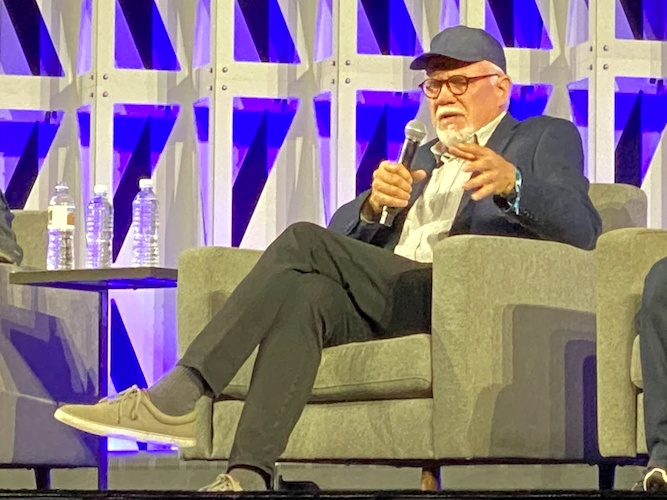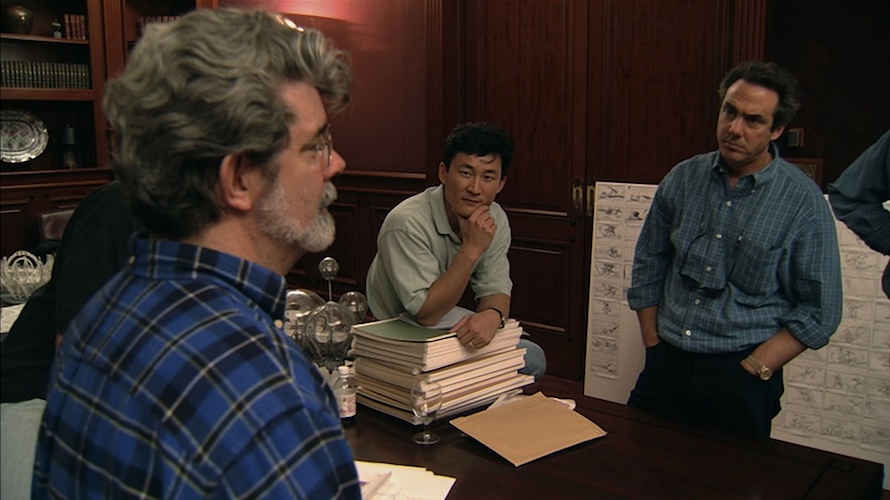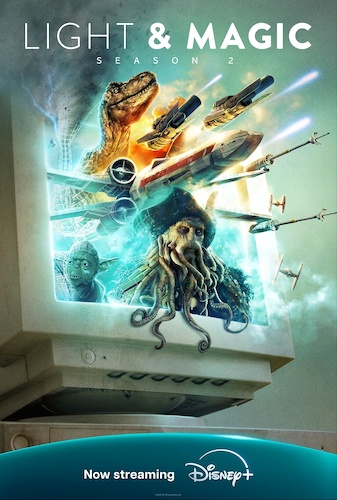Q&A: "Light & Magic" Season 2 Director Joe Johnston Discusses What He Learned from Making the Docuseries
Over the past few decades, filmmaker Joe Johnston has become known for directing such popular movies as Disney’s The Rocketeer and Honey I Shrunk the Kids, Sony’s Jumanji, Universal’s Jurassic Park III, and Marvel Studios’ Captain America: The First Avenger. But before that he toiled away as a designer and visual-effects artist at Industrial Light & Magic, which makes him the perfect director to take over for Lawrence Kasdan on the second season of the acclaimed Disney+ documentary series Light & Magic. This week Laughing Place was invited to participate in a press conference for Light & Magic season 2, in which Johnston discussed his approach to telling another chapter in the story of Lucasfilm’s in-house VFX studio.

Joe Johnston began by talking about where in the timeline of Industrial Light & Magic’s history this season of the documentary kicks off. “We really start this season with Jurassic Park, because it is recognized as the moment in the history of film when everything changed– when digital technology became viable as a visual effects tool. So that's really where we started and we take it right up to the present day with the technology and the projects that ILM is working on right now. One of the important stories that I wanted to tell with season two was the effect that George Lucas has had on digital technology and just [the film industry] itself– all his influences and the things that he's contributed to, the things he's come up with and invented and inspired. That's one of the focuses of season two."
Next, Johnston was asked about all of the archival footage from the late 1990s and early 2000s that was used in this season, and where it came from. “Fortunately I didn't have to do the digging, but there's hundreds and thousands of hours of archival footage. Fortunately, ILM instituted a policy years ago where they documented all this stuff: the meetings, the casual [moments of] people working on the projects. It's really been helpful to us, because there's so much to go through and we can really pick and choose the moments to incorporate into the documentary."
Then the filmmaker talked about what he learned from making this season of the Light & Magic docuseries. “Well, I learned a lot of stuff about ILM. You know, I had left ILM in 1985, when visual effects were all analog– there was no such thing as digital. So a lot of this was an education for me, just to be exposed to how the digital revolution sort of [took place]. There were a few people that I interviewed in the second season that I knew from before, but [also] a lot of people I didn't know very well, and there were tons of surprises about all kinds of stuff. It was really more enlightening than anything. It was. You also have to keep in mind that when you start a project like this, you don't know where it's going, you know? Documentaries, and a lot of feature films, are really made in the cutting room– and this was a perfect example of that. It's finding moments, it's finding individual stories– in a way sort of modular stories that can all be connected to tell a bigger story at the end– but it's definitely a voyage of discovery. Most of it happens in the cutting room."
Another topic that came up during the conversation were aspects of the visual effects field that don’t get enough attention these days. “One technique that doesn't get enough recognition is model building, said Johnston. “I think there's still a huge scope for practical model building when it is the appropriate and cost-effective method to achieve a great shot [or] a great sequence. And I think we touched on that in season two with John [Knoll] talking about the podrace [arena] model or the [Mustafar] model in Revenge of the Sith. It's all about what is the best technique, and the most cost-effective technique to use for any particular shot."
Lastly, Johnston touched on why he believed he was chosen by the documentary’s executive producers at Imagine Entertainment to helm season two of Light & Magic. “Well, I think that the reason Imagine asked me to direct this second season was that even though I really had nothing to do with this technology or any of these films that were made– except a couple that were mine– was because I was an insider in a completely different age: the analog age. And I think it allowed me to have a unique perspective on ILM then as compared with ILM now. I mean, that's my assumption, anyway."
All three episodes of Light & Magic Season 2 will be released tomorrow, Friday April 18th, exclusively via Disney+.
More on Light & Magic:



